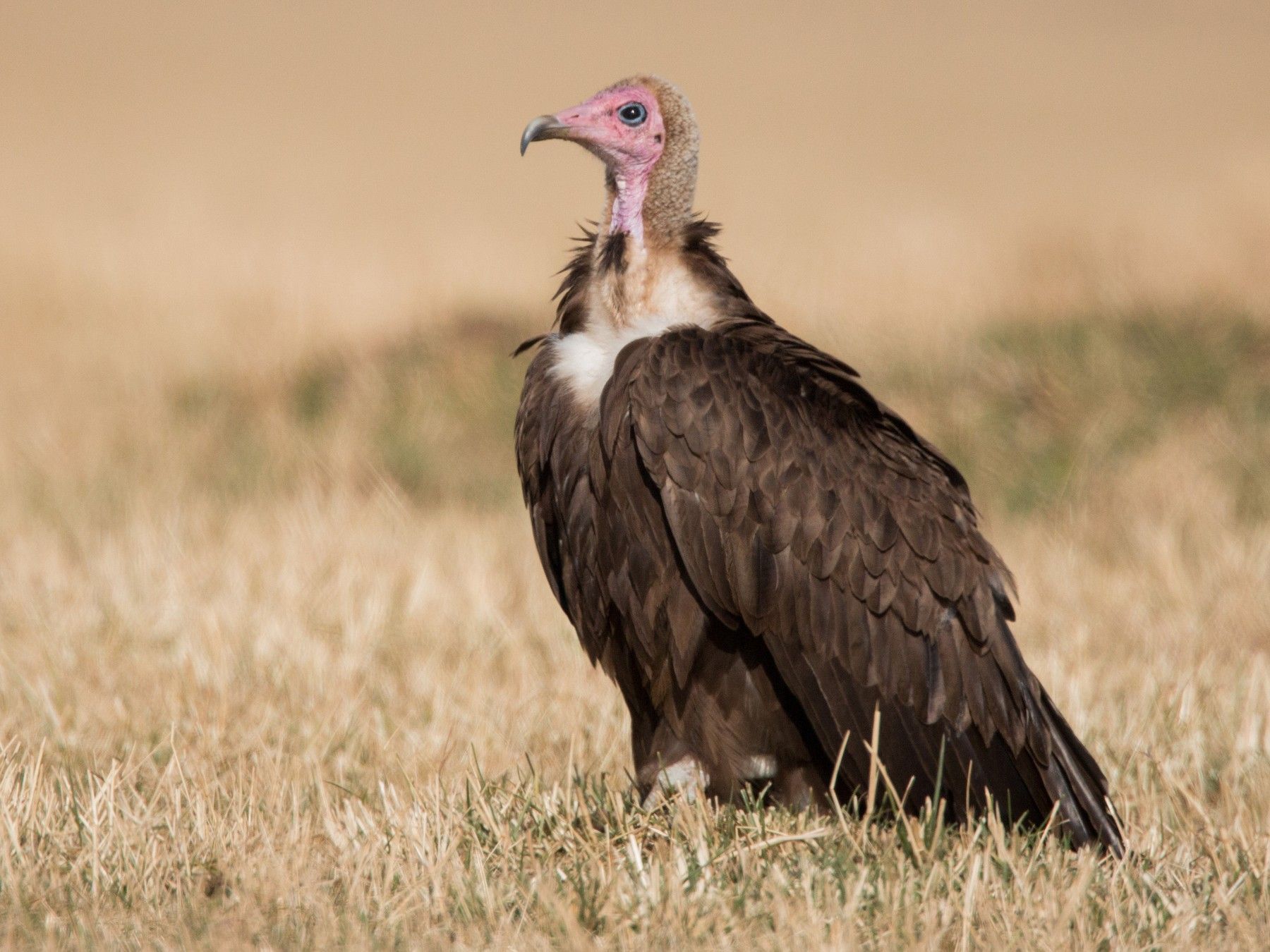Hooded vulture
Necrosyrtes monachus
ORDER
Passeriformes
FAMILY
Pycnonotidae
GENIUS
Pycnonotus
2690
Observations
1900
Photos
26
Recordings
06
Videos

Description
The hooded vulture (Necrosyrtes monachus) is an Old World vulture in the order Accipitriformes, which also includes eagles, kites, buzzards and hawks. It is the only member of the genus Necrosyrtes, which is sister to the larger Gyps genus, both of which are a part of the Aegypiinae subfamily of Old World vultures.It is native to sub-Saharan Africa, where it has a widespread distribution with populations in southern, East and West Africa. It is a scruffy-looking, small vulture with dark brown plumage, a long thin bill, bare crown, face and fore-neck, and a downy nape and hind-neck. Its face is usually a light red colour. It typically scavenges on carcasses of wildlife and domestic animals. Although it remains a common species with a stable population in the lower region of Casamance, some areas of The Gambia, and Guinea-Bissau, other regions such as Dakar, Senegal, show more than 85% losses in population over the last 50 years. Threats include poisoning, hunting, loss of habitat and collisions with electricity infrastructure, and the International Union for Conservation of Nature has rated its conservation status as "critically endangered" in their latest assessment (2017). The highest current regional density of hooded vultures is in the western region of The Gambia.
Distribution
Although hooded vultures have relatively small home ranges, they are widely distributed across Africa. It occurs in Senegal, Mauritania, Guinea-Bissau, The Gambia, Niger and Nigeria in West Africa; in East Africa it is found in Chad, Sudan, South Sudan, Ethiopia and Somalia; in southern Africa it has been recorded in northern Namibia, Botswana, Zimbabwe, Mozambique and South Africa. Within South Africa, the species is essentially restricted to the Kruger National Park and surrounding protected areas in Mpumalanga and Limpopo provinces, though vagrants have been recorded further west in Kwa-Zulu Natal and Kgalagadi Transfrontier Park
Habitat
Open savanna and semi-desert, also woodlands and in many areas found in close proximity to towns and villages. The species is often associated with human settlements north of the Equator, but is also found in open grassland, forest edge, wooded savanna, desert and along coasts; and tends to occur at higher densities in areas where populations of larger Gyps vultures are low or nonexistent (Ferguson-Lees and Christie 2001. K. Bilstein in litt. 2016). It occurs up to 4,000 m, but is most numerous below 1,800 m. It feeds mainly on carrion, but also takes insects (and will congregate in large numbers during insect emergences [Smalley 2016]). In West Africa and Kenya it breeds throughout the year, but especially from November to July. Breeding in north-east Africa occurs mainly in October-June, with birds in southern Africa tending to breed in May-December. It is an arboreal nester, favouring Ceiba pentandra in Senegal (B. Bargain in litt. 2016), and lays a clutch of one egg. Its incubation period lasts 46-54 days, followed by a fledging period of 80-130 days. Young are dependent on their parents for a further 3-4 months after fledging (Ferguson-Lees and Christie 2001). Measurements of nesting success at the Oifants River Provate Nature Reserve, South Africa showed, success of 0.44-0.89 offspring per pair per year in 2013 and 0.50-0.67 offspring per pair per year in 2014 (Monadjem et al. 2016).
Feeding
Hooded vultures are scavengers and carrion-eaters. Because of their relatively small size and weak bill, they generally wait at a carcass to pick up scraps left by larger vultures. In urban areas, they scavenge in refuse dumps and gutters.
Breeding
It breeds in a stick nest in trees (often palms) in much of Africa south of the Sahara, laying one egg. Birds may form loose colonies. The population is mostly resident and sedentary, rarely moving more than 200 km
Threats
Major threats to this species include non-target poisoning, capture for traditional medicine and bushmeat (McKean et al. 2013), and direct persecution (Ogada and Buij 2011, Ogada et al. 2016). In Nigeria, a survey of medicinal traders found that Hooded Vulture was the most commonly traded species of vulture, with 90% of all vulture parts traded belonging to the species (Saidu and Buij 2013). And across West and Central Africa the species is one of the most heavily traded, with an estimated 5,850-8,772 individuals traded over a six-year period in West Africa (Buij et al. 2015). Hooded Vulture meat is reportedly sold as chicken in some places. Intentional poisoning of vultures may be carried out in some areas by poachers in order to hide the locations of their kills, but in Senegal at least vultures to receive a form of cultural protection from such killing because they are the totem for some families (B. Bargain in litt. 2016). Secondary poisoning with carbofuran pesticides at livestock baits being used to poison mammalian predators is also an issue in East Africa (Otieno et al. 2010, C. Kendall in litt. 2012, Roxburgh and McDougall 2012). Declines have also been attributed to land conversion through development and improvements to abattoir hygiene and rubbish disposal in some areas (Ogada and Buij 2011), and, in Senegal, a decline in the number of their favourite nesting tree species (B. Bargain in litt. 2016). The species may also be threatened by avian influenza (H5N1), from which it appears to suffer some mortality and which it probably acquires from feeding on discarded dead poultry (Ducatez et al. 2007), although this is not well substantiated (C. Kendall in litt. 2016).
References
Clements, JF. 2010. The Clements Checklist of Birds of the World. 6th ed., with updates to December 2010. Ithaca: Cornell Univ. Press. ISBN 978-0801445019. BirdLife International. 2017. Necrosyrtes monachus (amended version of 2017 assessment). The IUCN Red List of Threatened Species 2017: e.T22695185A118599398. https://dx.doi.org/10.2305/IUCN.UK.2017-3.RLTS.T22695185A118599398.en. Downloaded on 21 January 2021.